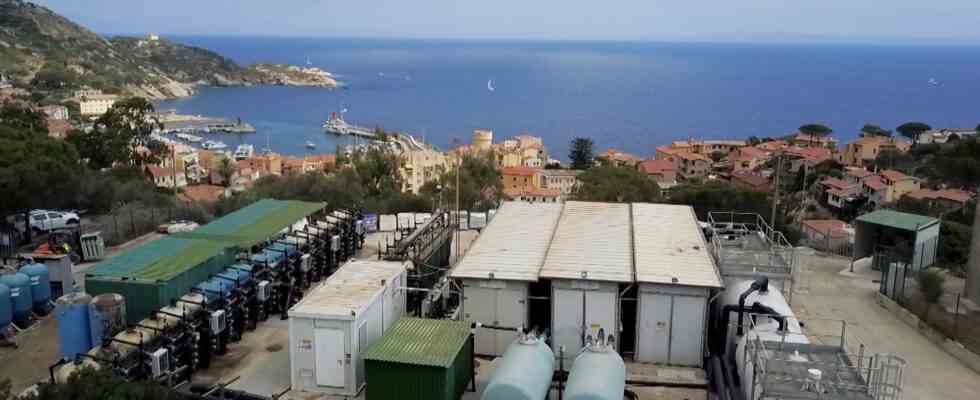Europe Magazine
Status: 07/16/2022 08:40 a.m
Persistent heat is dwindling Italy’s water supplies. Thanks to a desalination plant, there is enough drinking water for everyone on the island of Giglio – but the system is increasingly reaching its limits.
Behind the port, made famous by the disaster of the cruise ship “Costa Concordia” ten years ago, lies the heart of the island of Giglio, hidden on a hill and as big as a soccer field: the seawater desalination plant.
Without the system, nothing would work on Giglio. Up to two million liters of drinking water are produced here every day. The water is pumped up from the sea and first filtered. It is then pressed through fine membranes at high pressure. The salt stays behind and fresh water comes out the back.
Brine kills plants
What sounds like a solution to the freshwater shortage in many places is, however, fraught with pitfalls. The biologist Andrea Belluscio from the Sapienza University of Rome and his team have been studying the seabed off Giglio for more than ten years, including around the desalination plant. They start their dives from the dinghy. He points to a small bay where two sewage pipes lead into the sea. There, concentrated brine from the plant is released into the environment, which is three times as salty as normal seawater.
The biologists determine that the plants have died within a radius of around 30 meters. Also the neptune grass, which is crucial for the water balance. It grows everywhere else off Giglio’s shores. Neptune grass has the same meaning as a forest on land, explains Belluscio: It stabilizes the soil, produces oxygen and serves as a shelter for fish and many other creatures. The seagrass forests are a real ecosystem. However, the effects are relatively local, he says. Further out, the brine then dilutes sufficiently.
The highly concentrated brine is discharged from the plant into the Mediterranean via sewage pipes.
Image: BR
Renewable energy? No option
The desalination plant has even more problems: it has to be overhauled every ten years because it quickly becomes salinated. Every eight days it means: change the filter! A filter costs 250 euros, and dozens are needed. And there is one more point: the power requirement. The system consumes about as much energy as 500 three-person households per year.
Electricity production on Giglio is done with diesel generators. For the desalination plant alone, an average of around 1000 liters of diesel are burned every day. In summer, when many guests come to the island and the desalination plant is running at full speed, it is correspondingly more.
Giglio is spoiled by sun and wind. But Mayor Sergio Ortelli says renewable energy sources are not an option. Many houses are historic and are not suitable for solar panels. Most of the island is a nature reserve, so no wind turbines would be an option either. Ortelli points to a future project: connecting the island to the mainland power grid with an underwater cable. However, the start of the project is unclear. And so oil continues to be burned to produce electricity and thus drinking water.
The main town on the island of Giglio: residents, holidaymakers and day visitors share the drinking water from the desalination plant.
Image: BR
No alternatives to seawater desalination
In the past, the islanders could only get their water from the natural springs of Giglio and collected rainwater. But today there is no good alternative to desalination: in summer the number of inhabitants increases tenfold, and there are also many day visitors. The island’s natural springs are no longer sufficient to meet the water demand.
Life without a desalination plant would be unthinkable for hoteliers like Eva Mariuz. When her family opened the hotel in 1970, the island was supplied with water by ship. The water kept getting scarce. Since the desalination plant has been in existence, it has never had any problems again, says Mariuz.
But the fact that fresh water is now permanently available poses a risk, believes biologist Andrea Belluscio: no one needs to think about whether to shower once, twice or three times a day. In the port, the ships would be hosed down with fresh water. In order to discharge as little brine as possible into the sea and to use less electricity for the system, there is only one thing that can be done, says Belluscio: using the precious resource of water sparingly.
You can see this and other reports in Europamagazin – on Saturday at 12.45 p.m. in the first.

